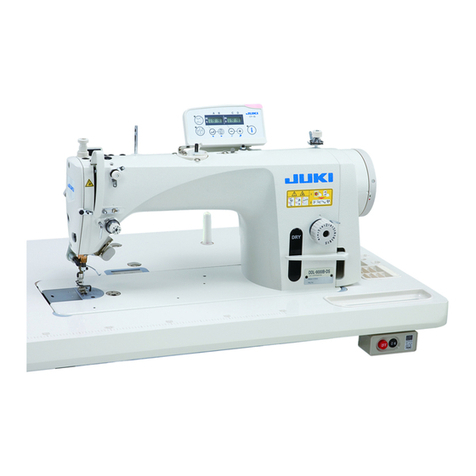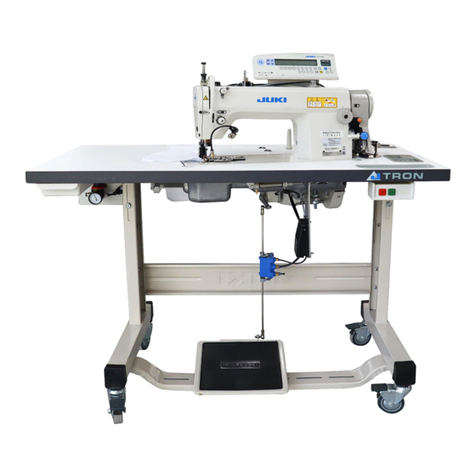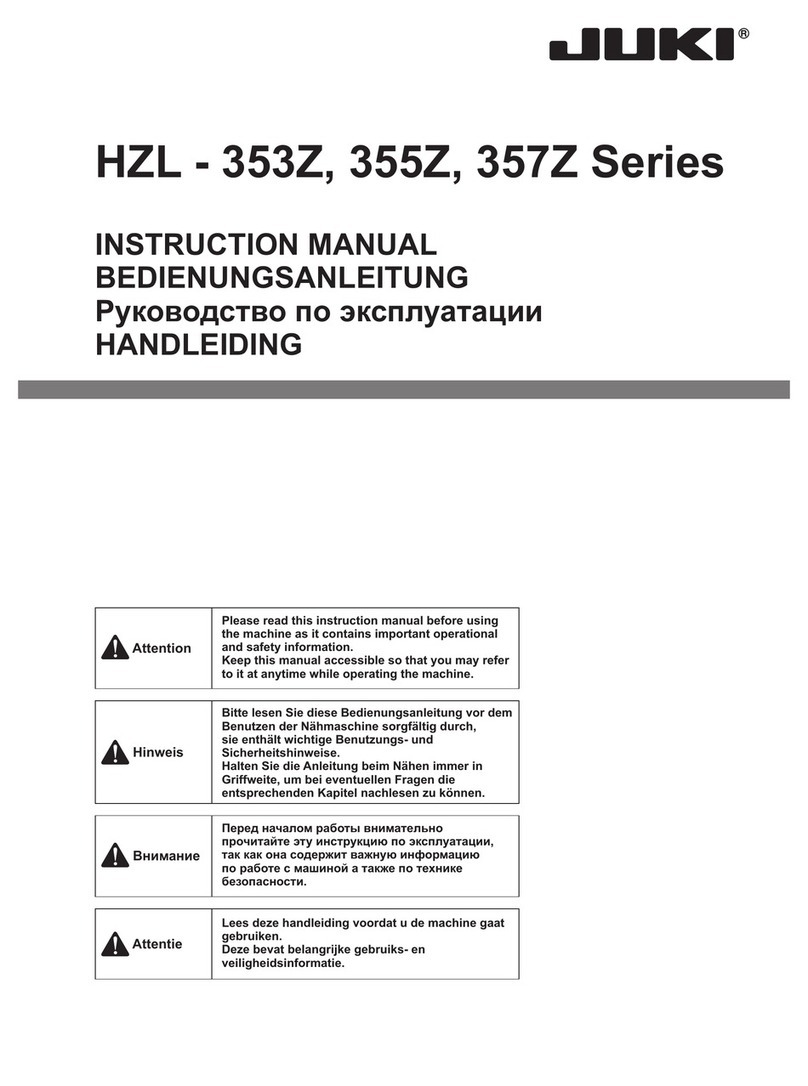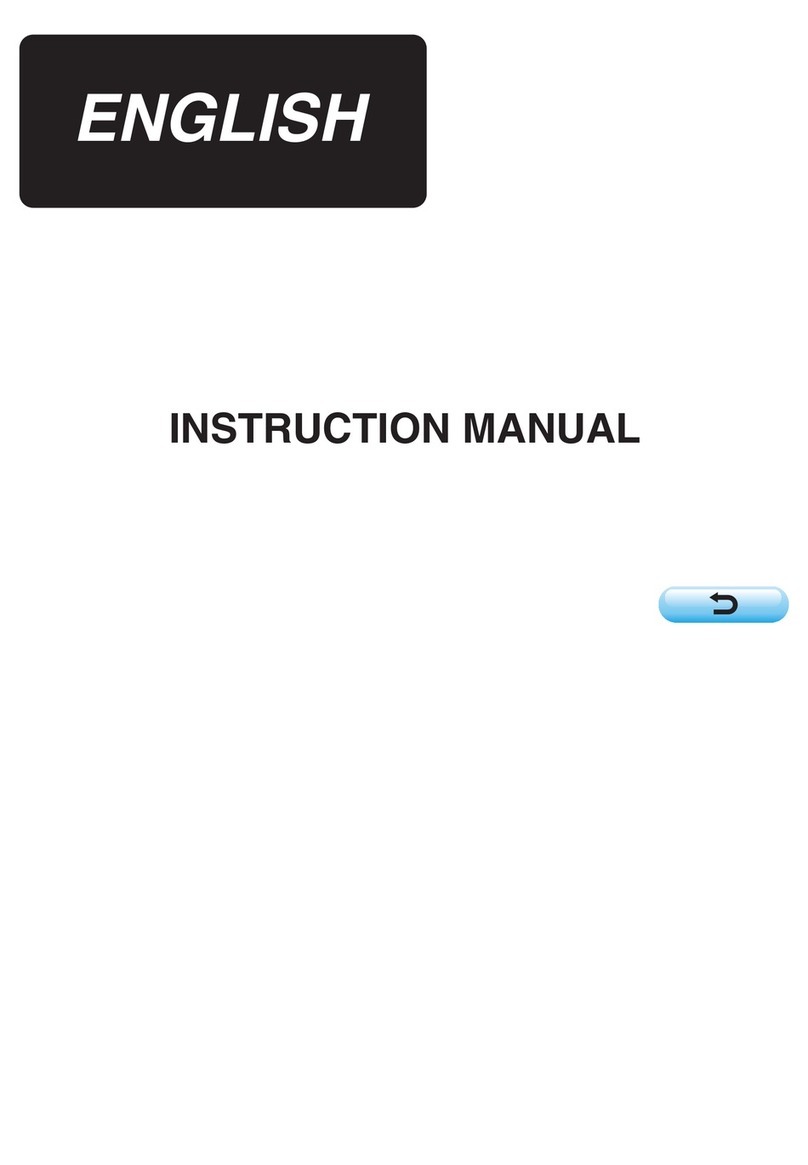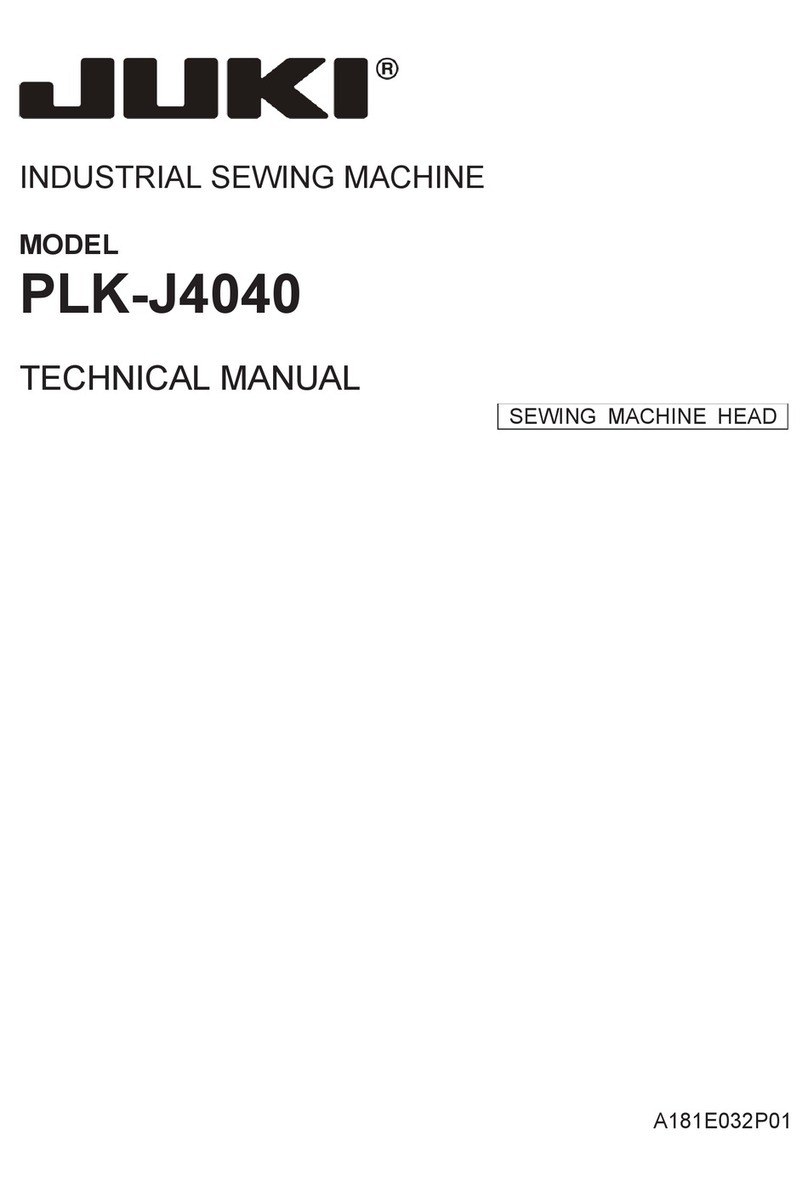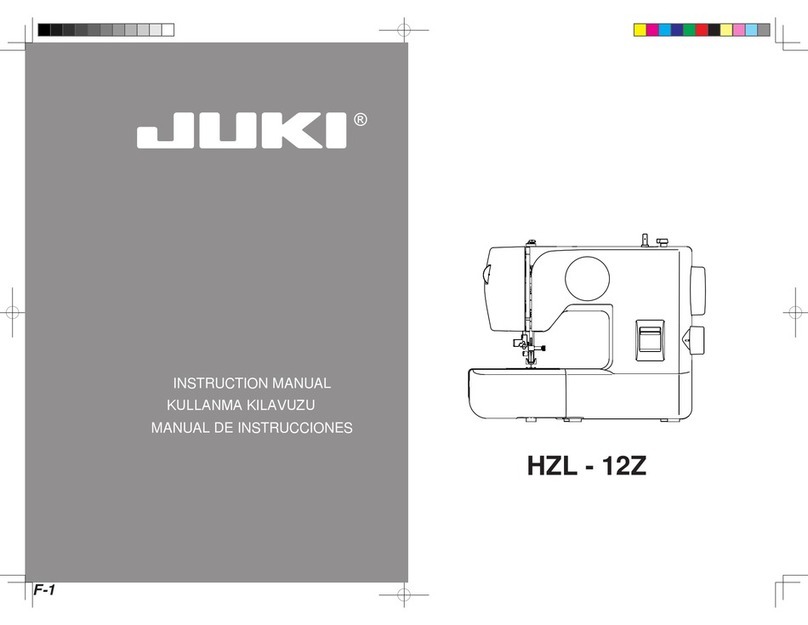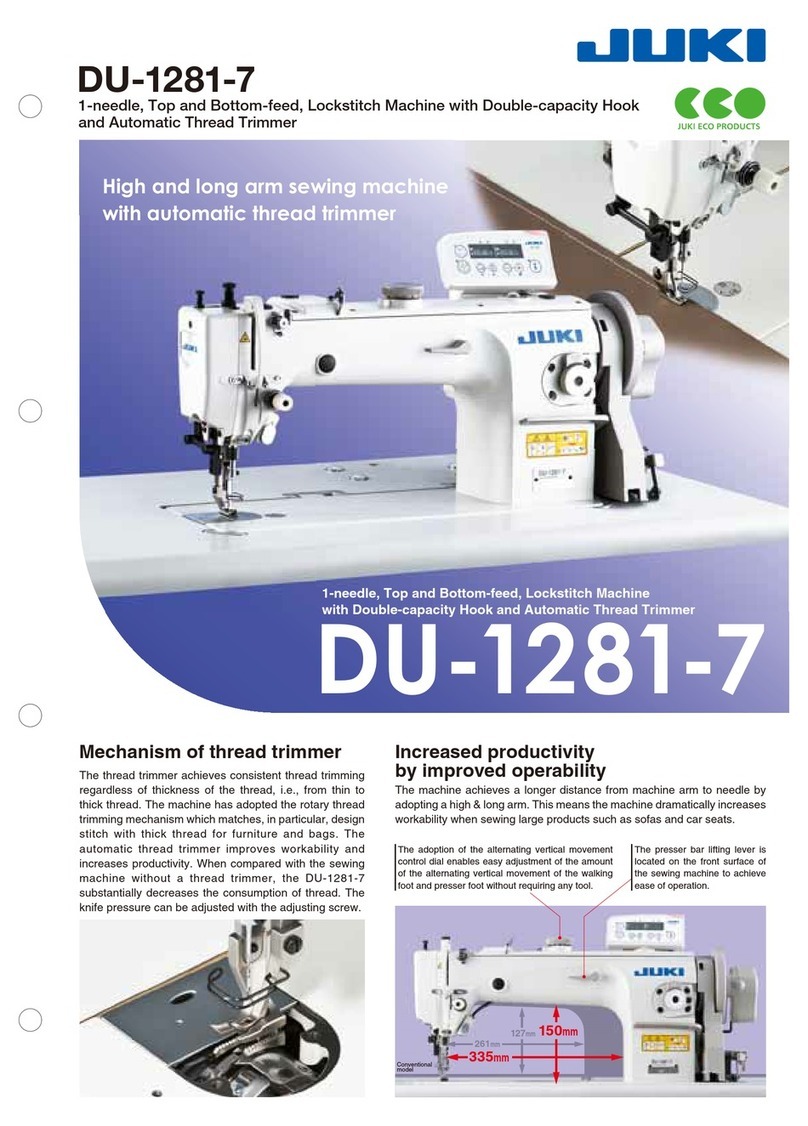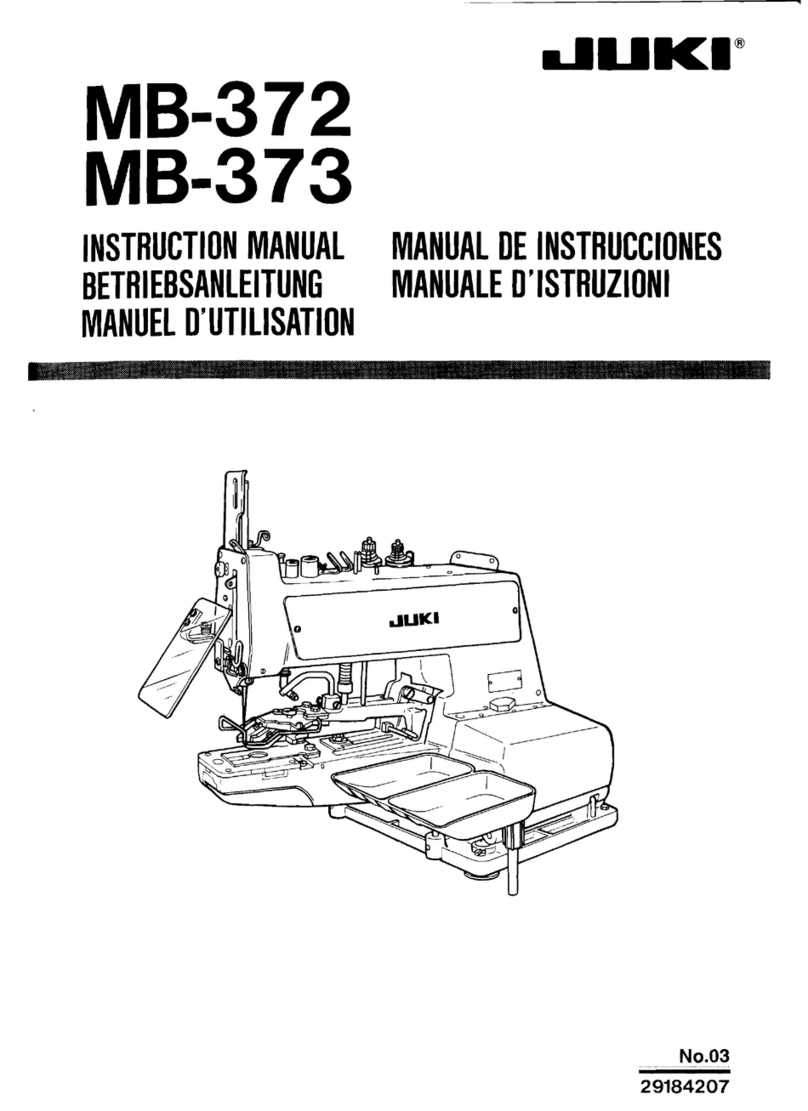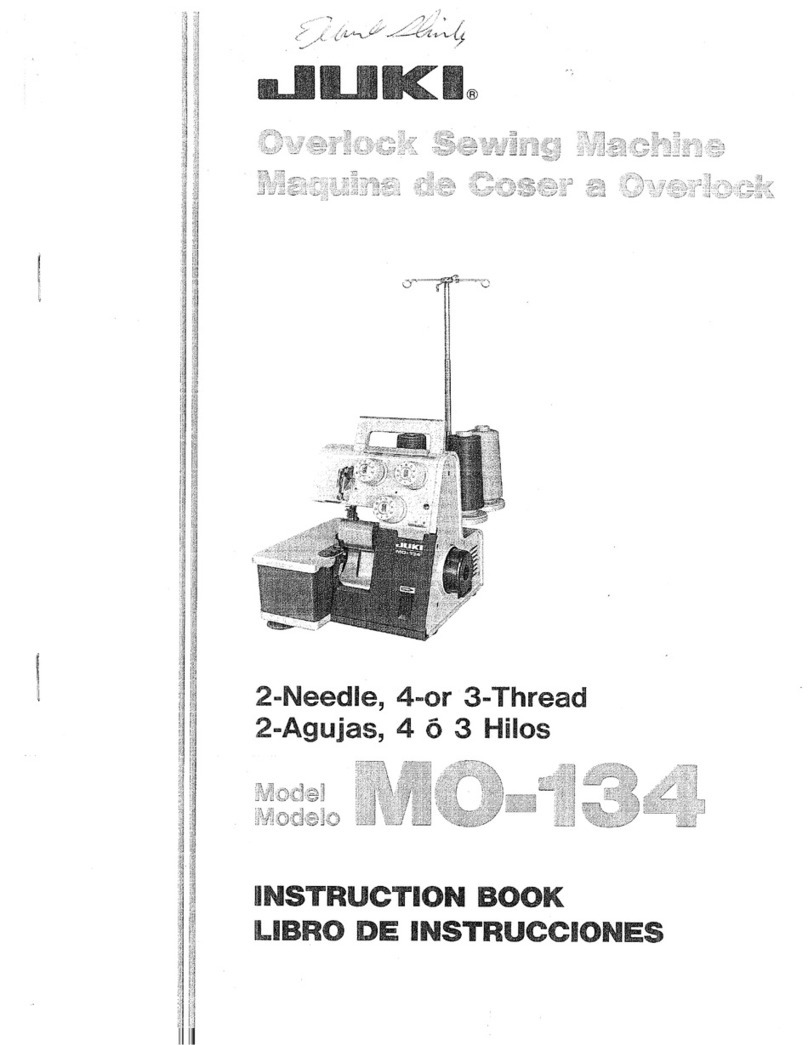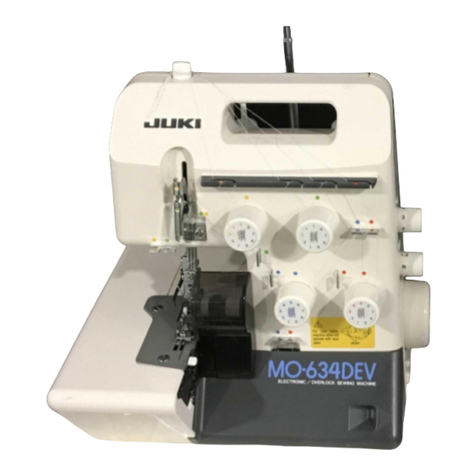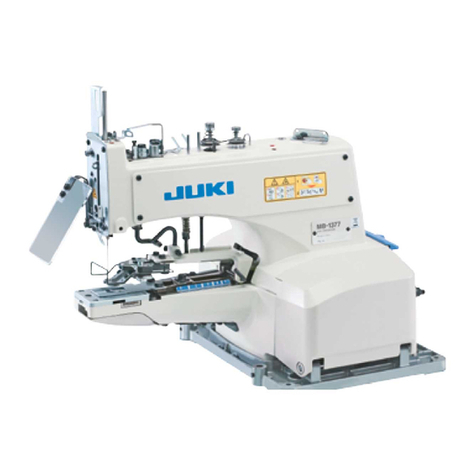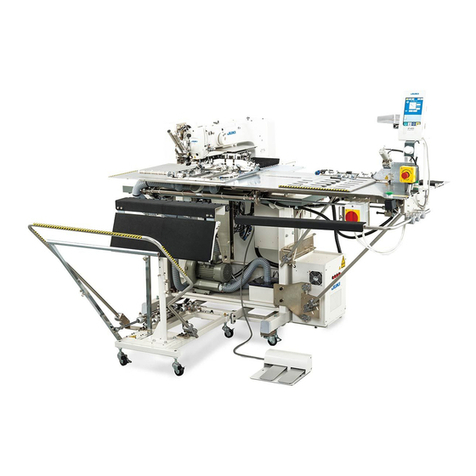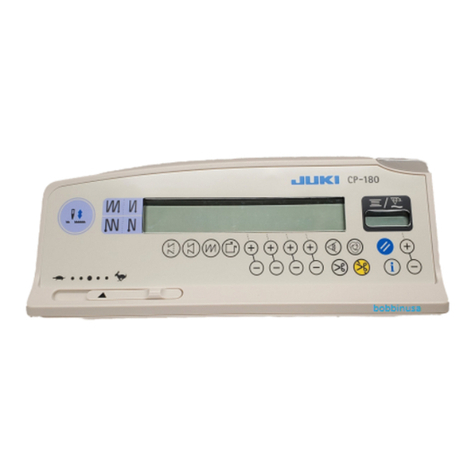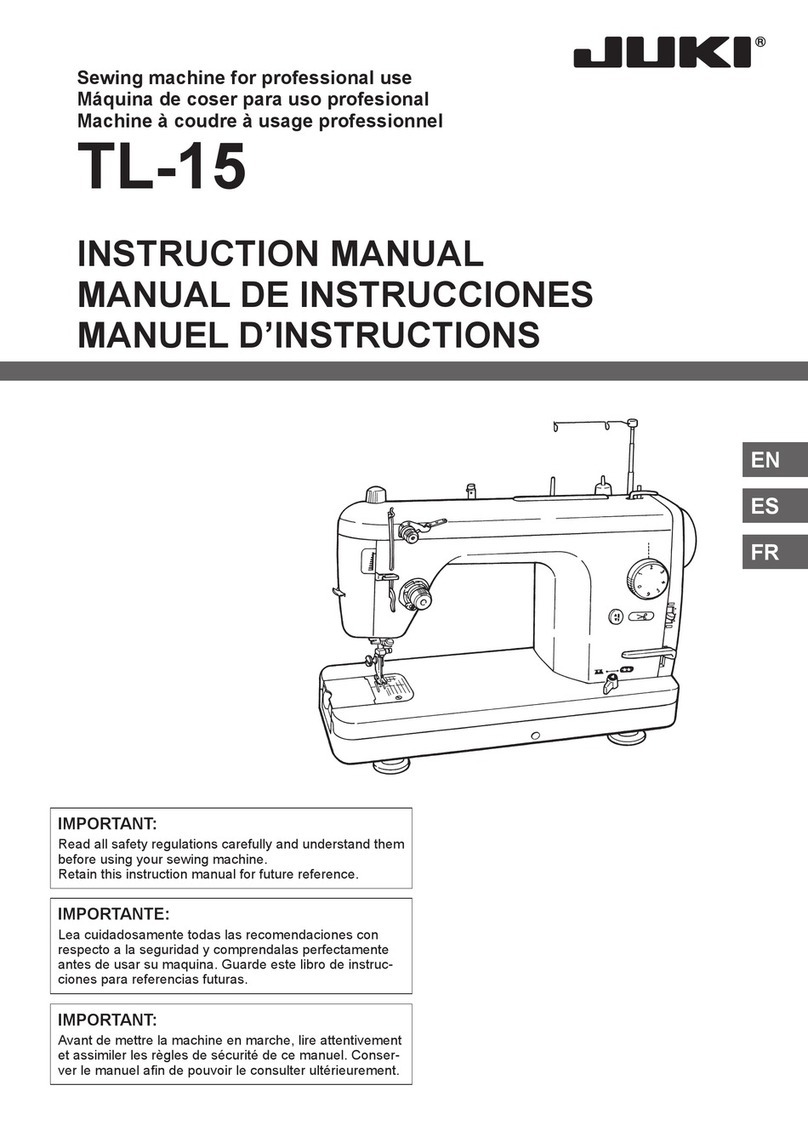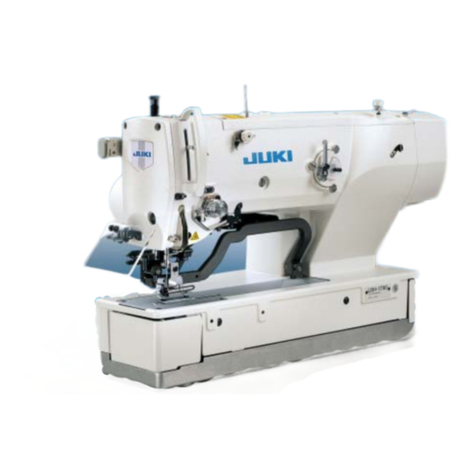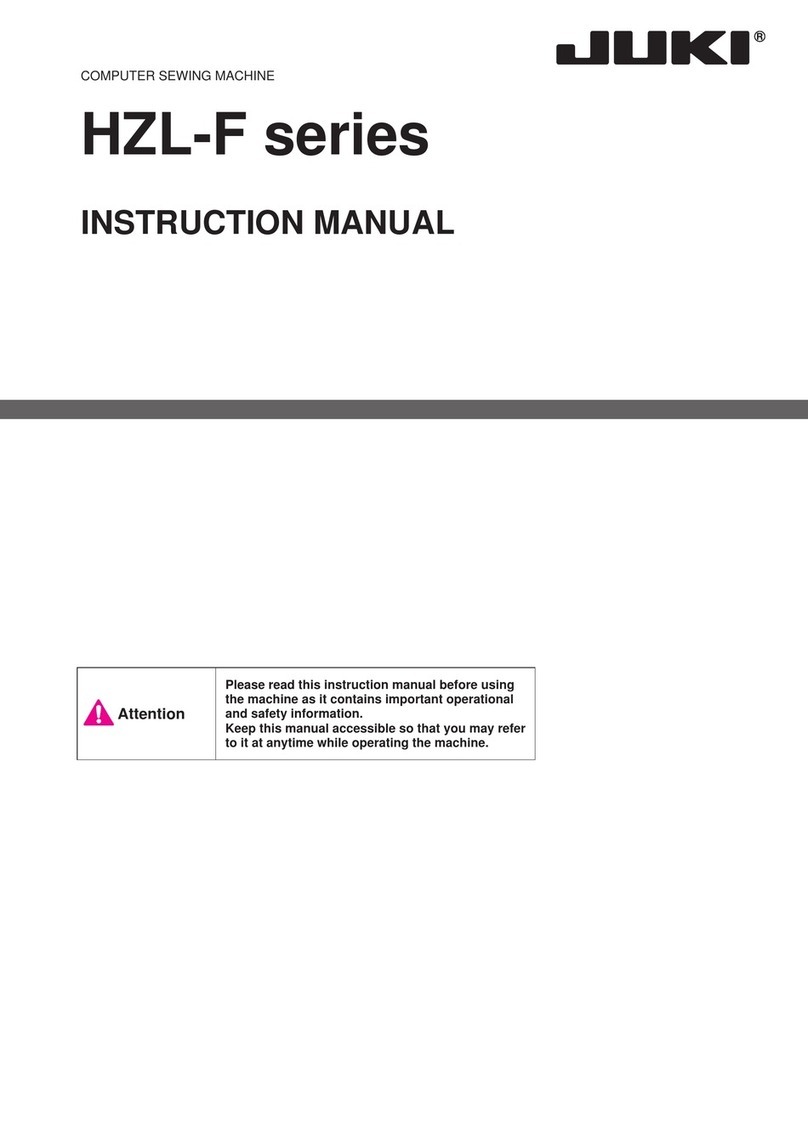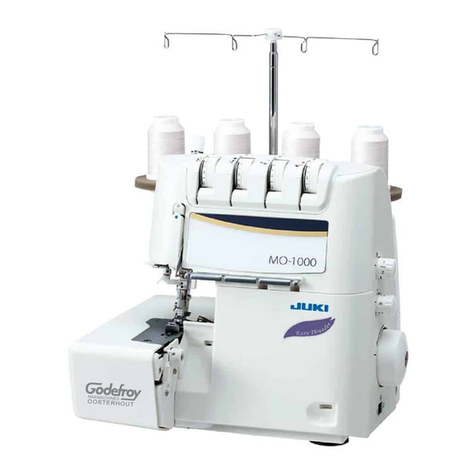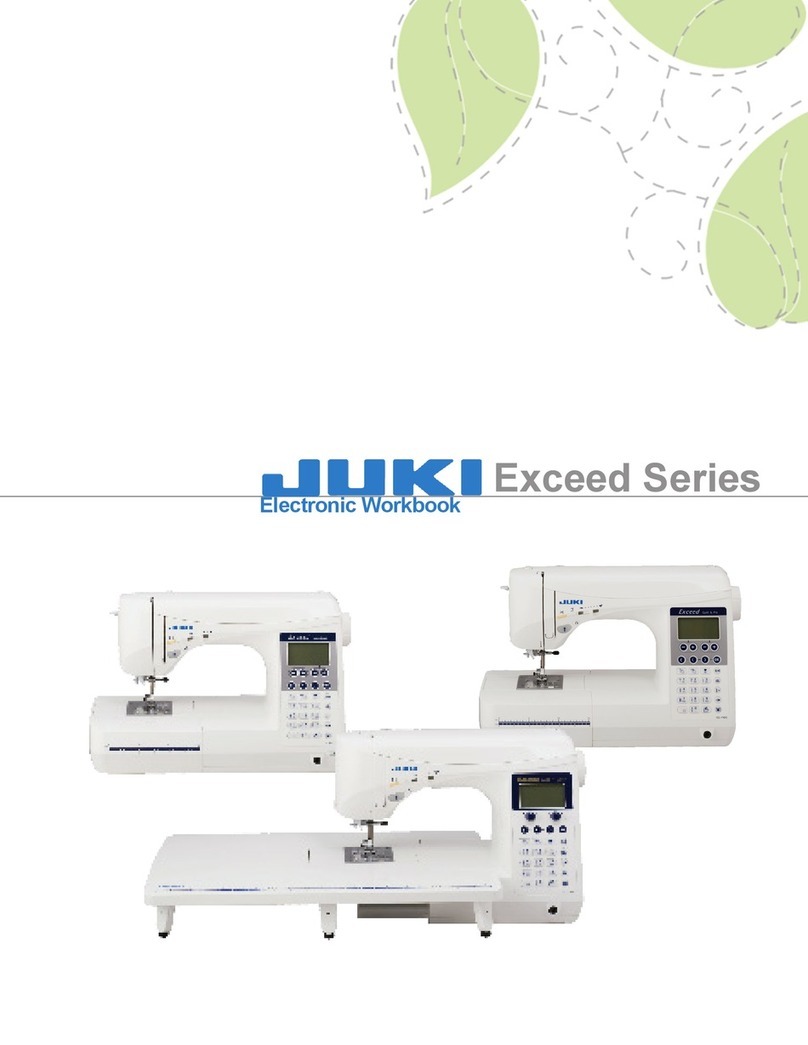-1
l S. ADJUSTING
THEFEED
TI'MIIHG
l) To obtainthe standard
feedtiming.alignsetscrew
@
on feedeccentriccam O with setscrew
@ onmain
shaft
thrustcollar @
Tomakeadjustment,
loosentrvosetscrews
@ torelease
the feedeccentriccam,
properll,'
position
theeccentric
cam.Thenretishtenthesetscrews.
To advancethe feedtimins
in orderto Drevent
uneven
materialfeed, move the Jeed e.cetrtric
cam in the
directionofthearrow.
To delay the feed timing in order to increase
stitch
tightness,move
the feedeccentriccanr
in theopposite
direction
fromthe
arrow.
Be carefulnot to move
thefeed
orelseneedle
breakaee
mavresult
?)
4)
s) eccentric
cam too far,
I
(Standard
feed
timing)
||
Needle
:zzrww\oNzzzz 16s631
Feed
dog ' plate
16. TILT
OF
THEFEED
DOG
Thestandard
tilt (horlzontal)
of the
leeddog
is
obtained
when marker dot 6 on the feedbar shaftis aligned
withmarker
dot @ onfeed
rocker O
To tilt thefeed
dog
withitsfront
upinordertoprevent
puckering,
loosen
the setscrew,andturn the feed
bar
shaft90 degrees
in the direction
of the arrow.using
a
screwdriver.
@ Frontup @ Standard @ Frontdown @ Throat
plate
3) To tilt the feeddog with its front down in orderto
prevent
unevenmaterialfeed,turn the feedbarshaft90
degrees
in theoppositedirection
from thearrow.
(Precaution)
Whenever
the feeddog tilt is adjusted,the
feed
dogheightwill bechanged.So,it isnecessarytocheck
theheightaftertilt adjustment.
&vr.rn
^
)\
-N\-\ ,rl
"N*"\ I
--r-----v
1)
L)
17.HEIGHTO'F
THEFEEDDOG
Thefeed
dogis factory-adjustedso that it juts out from
the throat platesurface
0.8 mm to 0.9 mm (1 mm for
DDL-5550H-6).
For the DDL-5550A-6,
it juts out 0.7mm to 0.8mm.
If thefeed
dog
juts out to6much.
puckering
mayresult
when sewing light-weightmaterials. (Recommended
protrusion:
0.7mm to0.8mm)
To adjusttheheight
of thefeeddog:
@ l,oosenscrew @ ofcrank O
@ Movethefeedbarup or downto makeadjustment.
@ Securely
tightenscrew @ .
1)
2)
{l
@ Feed
dog @ Throat plate
(DDL-b5506)
0<?-0.9..
_NVVWV{\),-
o t7-
6
(DDL-5550A6) o 7-0 8"
-
_NNNNV{\}
@ tr-
{t
1
8. NEEDLE.TO-HOOKRELATIONSHIP
1.
Adjustthe timing betweenthe needleandthe
hook
as
follows:
1) Turn the handwheelto bright the needlebar down to
thelowest
pointof its
stroke,
andloosensetscrew
O .
(Adjusting
theneedle
barheight)
)) '(fot i og needle) Aligrimirker line 6 onneedlebar
O with the bottom end of needlebarlower bushing
@ ,thentightensetscrew
l)
(Fora DA needle)Align markerline @ on needle
bar
O with the bottom end of needlebar lowerbushing
0 ,thentightensetscrew
Q
(Adjustingposition @ of the
hook)
3) (For
a
DBneedle)
Loosenthe three hook setscrews,
turn the handwheel,
and align marker line @ on
ascending
needlebar O with thebottomend
ofneedle
barlower
bushing
@
(For
aDA needle)
Loosenthe three hook setscrews,
turn the handwheel,
and align marker line O on
ascending
needlebar O withthebottomend
ofneedle
bar
lower
bushing@ .
4) After makingtheadjustments
mentioned
in the above
steps,align
hook blade
point tp with the centerof
needie
@ . Provide
a clearance
of 0.04
mm to0.1
mm
between
theneedle
and
thehook, then
securelytighten
thehooksetscrews.
il ''o r i >-v-'-
. wJrn
trpraclngttrertoor.,tp..irv
its
part
rtro.irrqrssE
111092251
for DDL-5550H-61.
